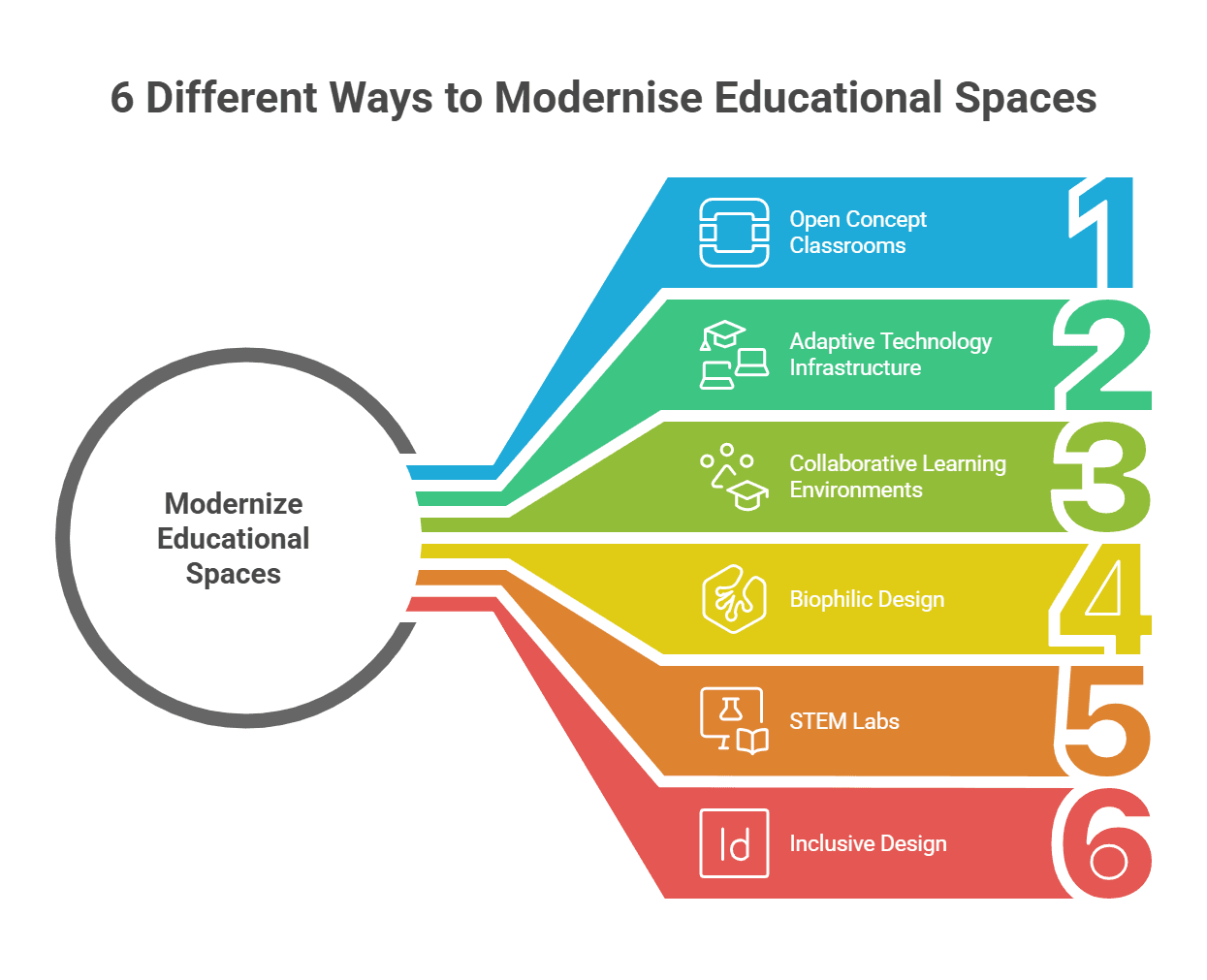Transforming Education Spaces: Future Trends in School Refurbishment

The new work world is bringing in new changes to the traditional office setup to enhance the employee experience. Another sector that has been prioritising the modern changes is the educational sector. The primary goal is to build student-teacher relationships and harness the learning experience.
In the past, schools were more into academics and little into extracurricular activities. Classrooms had desks that directly faced the teacher, a blackboard and some extra set up depending upon the class. Outside there was a playground for us to have fun. It was plain and simple.
But now education is changing. New technologies are in the picture that bring in interesting experiences. Now, it’s not about offering facilities or opting for school refurbishment. It’s also about leading innovations that will foster collaboration, innovation and sustainability among the students.
This blog will shed light on 6 different trends in the education space where students can be themselves and explore their best selves.
Different Ways to Modernise Educational Spaces
1. Open Concept Classrooms
The open-concept classroom refers to where the old setup with rows and desks is replaced with more flexible and ergonomic designs. These new classrooms will not have dividing walls for the students. This will promote more open conversations among the kids. They can work and talk more freely without any fear or hesitation.
These modern school designs will have movable furniture and partitions that are quick to install based on the instruction required. The flexible learning space will encourage children to engage.
It also boosts self-esteem and empowers them to present their ideas and share thoughts without any judgement. The open-concept classroom will assist schools in creating an experience that is aligned with every individual student.
2. Adaptive Technology Infrastructure
As the world evolves and brings new technologies, adapting the latest technologies will only reap benefits. There are online tools, smart whiteboards, WiFi, cloud-based learning platforms, and tech-enabled spaces in smart classes. The integration of technology allows the students to research their subjects and learn how to use the power of technology in the right manner. Another core reason for involving technology is because of the visual experience. Students are directly able to view their topics. This makes it more engaging and does better in the school.
3. Collaborative Learning Environments
If there’s one skill to be mastered in the 21st century then it's collaboration. Schools are considering this by creating an environment that can facilitate teamwork. It’s no more simply a place for the student, it’s also for building the community stronger.
The learning spaces will motivate students to go for group activities, and discussions and even assist in different projects. All of these will help the students strengthen their critical, social and collaborative skills for the successful implementation of the environment.
4. Biophilic Design
One of the most crucial ways of designing schools is by incorporating elements of nature via biophilic design. Through this approach, you can instil a positive impact on the student’s mental well-being and academic performance. The newly refurbished school will be adorned with plants, natural lights, and the usage of eco-friendly materials.
School buildings are also adding things like solar panels, energy-saving lights and an open garden on the roof. This can help students study in a healthier space and closer to Mother Nature.
5. STEM Labs
STEM (Science, Technology, Engineering, and Mathematics ) education is a crucial part of academics. Many refurbished schools are setting up special labs to help with it.
These labs will comprise the latest technology, tools, and materials that will aid the students in learning the concepts on a practical basis. Students, who wish to pursue a career in these dedicated fields can experience the benefits of first-hand learning.
6. Inclusive Design
The traditional schools didn’t give much thought to everyone’s requirements. Because of that, many groups and individuals were left out and made inequalities worse. However, with modern school designs, inclusivity is considered a top priority. Everyone can fully take advantage and participate in the learning experience.
All the accommodation is built using the universal design principles that are in favour of everyone. This comprises features like wheelchair-accessible facilities, technologies that can aid students with different learning styles, sensory-friendly spaces and more.
Final Thoughts
The way school designs are changing is incredibly exciting. As new technologies and modern designs come into the place, it’s making space for everyone. It brings in a sense of responsibility among students towards their contribution in nature.
Schools are no longer a place for mere study purposes. It’s also about building new relationships and exploring their fullest potential at its best.